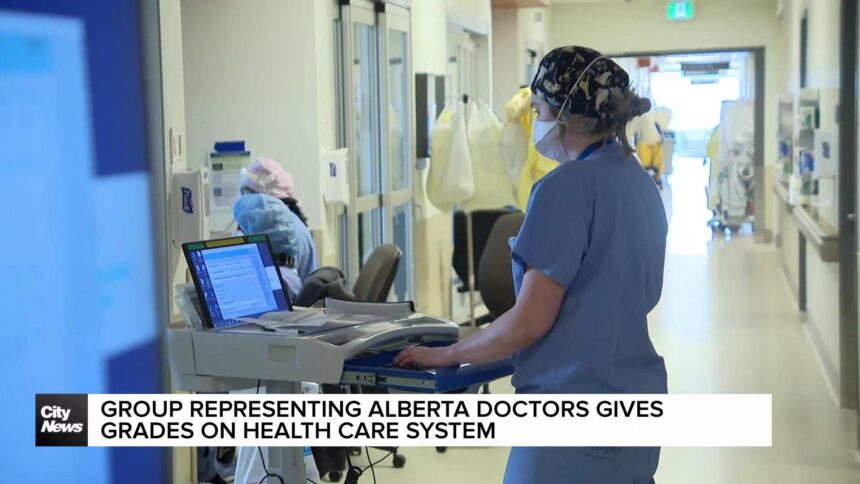In a scathing assessment that underscores growing concerns within Alberta’s medical community, the province’s health care system has been awarded predominantly failing grades by the very professionals tasked with delivering patient care. The Alberta Medical Association (AMA) released its comprehensive evaluation yesterday, painting a troubling picture of a system under significant strain despite government assurances of improvement.
“What we’re seeing is a fundamental disconnect between political rhetoric and frontline reality,” said Dr. Marian Reynolds, president of the AMA, during the report’s unveiling in Edmonton. “When physicians who dedicate their lives to this system are giving D’s and F’s across critical metrics, it should trigger immediate alarm bells in government corridors.”
The report card, which evaluated everything from emergency department wait times to rural healthcare access, gave particularly concerning marks to physician recruitment and retention—awarding an F grade amid unprecedented vacancy rates in key specialties. Emergency department capacity received a D-, with doctors citing dangerous overcrowding that has become normalized rather than treated as the crisis it represents.
This evaluation comes just six months after Health Minister Samuel Thompson’s ambitious healthcare reform package promised to “revitalize and modernize” Alberta’s medical system. The AMA assessment suggests these initiatives have yet to produce tangible improvements for patients or providers.
“We’re not merely facing staffing shortages—we’re witnessing system collapse in slow motion,” explained Dr. Karim Haddad, an emergency physician in Calgary who contributed to the report. “When I started practicing fifteen years ago, having patients in hallways was a rare emergency measure. Now it’s standard operating procedure.”
The only passing grade—a modest C—was awarded to technological infrastructure, acknowledging recent investments in digital health records. However, doctors noted that technology improvements mean little when fundamental staffing and capacity issues remain unresolved.
The provincial government’s response has been swift but defensive. “We acknowledge there are challenges, but this report fails to recognize the significant investments and improvements made over the past year,” said Minister Thompson in a statement obtained by CO24 News. “Healthcare transformation takes time, and we remain committed to building a system that works for all Albertans.”
Healthcare analysts note that Alberta’s struggles mirror broader national trends in healthcare delivery, though the province’s rapid population growth has intensified pressures on an already strained system. Statistics Canada data shows Alberta experienced a 3.2% population increase last year—nearly double the national average—without proportionate expansion in healthcare capacity.
Patient advocacy groups have rallied behind the AMA’s assessment. “These grades confirm what patients have been experiencing for years,” said Eleanor Winters, chair of Albertans for Patient Care. “When you’re waiting 14 hours in an emergency room or 27 months for orthopedic surgery, you don’t need a report card to tell you the system is failing.”
The AMA has called for an emergency summit with provincial leadership, presenting a five-point intervention plan focused on immediate retention strategies for healthcare workers and emergency capacity expansion before winter pressures exacerbate existing challenges.
As politicians and healthcare providers prepare for what promises to be difficult negotiations ahead, the question remains: in a province with substantial resources and wealth, how has Alberta’s healthcare system deteriorated to the point where those working within it see more failure than success?










